#effective backend technology
Explore tagged Tumblr posts
Text
Backend Support
Something new for you tonight, True Believers: a story set in @subliminalbo's Literary Universe! Featuring an image manipulation graciously provided by the man himself!
This story references characters from the Obedience by Fleur series. While not required, the main stories are suggested reading.
Thanks to my friend @subliminalbo (also at @subliminalboarchive) for the collabo.

Bailey's Huawai flagship, customized with added security and privacy features, rang and buzzed on her workbench. Her brow furrowed, temporarily wrinkling her flawless golden skin. "Support," Bailey muttered with caution as she answered. Very weird. If someone's calling this number… something is wrong.
"Uh," a timid male voice stuttered in response, followed by a long pause. "Um, I think I fucked up."
Bailey closed her eyes, sighing. "Go on."
"Well, I…," the man continued, but his cadence suggested he was distracted. "Hey, um, honey, don't touch that," he interjected, before refocusing his attention on Bailey. "I think she's broken. I broke her."
"You. Broke. Her," Bailey repeated slowly, each word more incredulous than the last. "And how… how did you break her, sir?"
Bailey thought she heard the man swallow hard through the tinny speakerphone. "OK. Well. I know that she has some, um, default abilities."
"Yes. Her menu. This was explained when you requested her services."
Loud noises. The sound of glass breaking. "Shit," the man said in irritation. "that was a gift!" He continued, talking faster, Bailey could practically hear him sweating. "Well, I wanted to know if she had, like, a secret menu. So I asked her, and she said no, but that there was…"
"An API," Bailey muttered. Fuck. She tilted her head back, eyes closed, and sighed again. She would have to work on hardening that endpoint. The last thing she needed was incel dipshits like Johnny Mnemonic here fucking with the product. She was a damn good engineer, but you don't exactly get to beta test mind control technology before you put it into production.
She should know. She was not only the president, she was also a client.
"What did you do, sir? Exactly?" Bailey's words were polite, but her tone dripped with frustration. Condescension also, but she really wasn't concerned about the customer's feelings right now.
Another pause, then an admission. "Well, she started telling me about her API, and I'm not a programmer, so I asked ChatLLM. And it gave me some things to try. Baby, take that out of your mouth."
"You fucking vibe coded her. You vibe coded a sex drone escort, running assembly code firmware, with some commands you got from a consumer AI. She's a human being, not a kit you bought at Radio Shack." Bailey could barely contain her rising anger. She mentally adjusted her hormone levels. Her pupils faded completely into solid white spheres. This wasn't the time to lose her cool.
There was hemming and hawing, then finally a guilty, "yes."
Bailey spoke again, the edge out of her voice as the fury subsided and her pupils returned. "Well, seeing as this would violate the terms and conditions of your agreement, if there were such a thing, I'm here to tell you: you break it, you buy it. Five mil ought to cover it. Have a good one."
"Five mil…five million dollars?!" the man exclaimed. Bailey could hear his voice quivering. "I don't have that kind of money! I work retail!"
"I'm sorry," Bailey said. And to her credit, she did pity this man. She knew enough to know his death would not be quick or painless. Triads don't fuck around. "The people I work with, they don't…" She chose her words carefully for effect. "take damaged merchandise lightly."
Bailey could her muffled crying on the other end. More broken glass, but no admonishment. Just sobs. She didn't like this. Didn't like the choices on the table. Having to calculate the least shitty outcome. Compromising her morality - her humanity - one crossed line after another.
But who was she kidding? Compromising your morality was The Romero Way.
"I don't want your dumbass blood on my hands. I'll make you a deal. Give me someone to replace her."
"I don't…what do you mean?"
"A wife, a sister, a cousin. Someone hot, or at least cute. Fixable. Someone local. A name, and an address, and you get to celebrate another birthday."
She could practically hear the man bargaining with himself. "I couldn't. I won't."
Bailey's voice was firm and callous. "No skin off my ass. Hope your will is in order." Give me a name, she pleaded internally. Take the goddamn offer.
"OK. I'll text it over." Very quietly, Bailey exhaled in relief. Her phone buzzed with a notification. She glanced at the address, and forwarded it to her liaison with some notes about tonight.
"You made the right choice. A team is on their way for extraction. For her, and for you."
"For me?"
"You know too much. Also, we have room in our inventory for all genders and sexual identities." In Romero, there are only perverts, and people who aren't perverts yet, Bailey ruminated.
When the man finally spoke, his voice was quiet, and his tone resigned. "Will she be okay? Will she be happy?"
Bailey hesitated. She thought of her mother, Rosa, her eyes glassy, wearing a low-cut red dress and her black choker, leaving a young child alone on a Saturday night. Baby, Mamá's got to go somewhere. Be a good girl and take care of yourself, okay?
She wanted to cynically deliver the uncaring truth. No, she wouldn't be okay. Ultimately, her happiness wasn't important, was it? It sure as hell hadn't been for Rosa, or for young Bailey. If you weren't part of Romero's circle of elites, you were just collateral damage.
But she didn't say that.
"Yes," Bailey lied, her voice soft and comforting. "She will." And she ended the call.
Bailey sat at her workbench for a long time, alone. Only the trees rustling outside the window permeated the silence. It could have been worse, she tried to tell herself. A lot worse. She saved a man from his own stupidity tonight.
When did she get so soft?
Ed King and Elena Maxwell had ruined her career before it got started, and they were going to pay. She only needed to set her emotions aside, and finish the job.
So why was she disgusted with herself?
These questions lacked simple answers. Tonight, isolated in her empty house, questions were the only company Bailey had.
#mind control#mind corruption#hypno fantasy#hypno story#tech control#reprogramming#brainwashing kink#hypnok1nk#hypno drone#humor#vibe coding#subliminalbo#ottopilot-wrote-this#cw: mind control#cw: corruption#cw: hypnosis#cw prostitution
14 notes
·
View notes
Text
Complex autonomous networking and ecosystems.
I'll formally introduce the term I coined a few posts ago about "Unaccountable autonomous Networking and Applications" in the past; the reason being is that somebody decided to...
Name a "Dow Clone" called "The Dao" sometimes also "The Dow" on top of Ethereum and smart contract tech; and then everybody forgot what it was called despite using it very frequently.
And despite it being very banal use of tech.
Because, seemingly, nobody seems to understand how technology works; We must start from the combined understanding that everyone; affluent or not; higher education or not; can in-fact pickup programming.
And because of this there are only two technology positions actually open; [new gal] and [old guy]
Because all our New Guys became trans women and floundered up the DEI process by filling all these jobs with a seemingly endless supply of queer-folk.
So I hate to tell you this; Technology is a very Queer Dominated career field. Because they couldn't get jobs elsewhere.
And they were all really good at the thing nobody knows how to do.
And today; we have idiots from all levels of management and government; trying to make taskers where they don't have trust employee voting tactics (or even other managers and employees)
Creating the previous term "DAO " for "Decentralized autonomous organization"
Which likely costs a *lot* of energy to perform what's effectively "American IDOL" voting from the comfort of your own sofa, knowing full well that nobody can hack you without your permission!
Automated Contracts are like Legal Contracts, in that they are legally obligated (automatically obligated at that! With no approval!) to do the thing they were tasked with doing.
Or you know; replacing traffic courts. Which were all gonna cede the fine even when we know we're right because who has time for that anyway?
The big difference and problem between the two is "Legally" mandated and "Automatically Mandated" legally mandated means it is backed by the legal system; which has approval authority. And "automatically mandated" introduced it's [approval] to every individual user specifically.
Who then has the responsibility of proving something didn't happen correctly. And could wind up in a costly mistake.
Which means that if a legal mistake were to occur; there's no measures to say that an action was meant to be ratified or enacted.
And that is all further cost overhead for the internet as a whole across the planet.
And all the work we put into our legal system will still need to be used on the backend after all that "I don't trust anyone" B's that will definitely get your Guild's Free Loot box raided by opportunists...
10 notes
·
View notes
Text
Metaverse for Business: A Complete Starter Guide
The Metaverse is no longer just a buzzword — it’s a powerful tool that smart businesses are already using to grow faster, work better, and stand out.
Whether you're just hearing about it or looking to build your first virtual space, this starter guide will walk you through everything you need to know — in simple Indian English.
🌐 What Is the Metaverse for Business?
The Metaverse is a virtual 3D environment where businesses can:
Create virtual offices
Run remote meetings
Build digital showrooms
Offer training and customer support
Host events and exhibitions
It creates an immersive experience — a space that feels real even though it’s digital.

💼 Why Should Businesses Use the Metaverse?
Here are top reasons why companies are moving to the Metaverse:
✅ 1. Better Collaboration
Virtual offices allow remote teams to meet, talk, and work as if they’re in the same room — improving communication and productivity.
✅ 2. Cost-Effective
Save money on travel, office rent, and event spaces.
✅ 3. Innovative Brand Experience
Customers can explore your brand in a whole new way — through interactive 3D spaces.
✅ 4. Next-Level Product Showcases
Display products in 360° views with real-time interaction.
✅ 5. Employee Training
Create realistic training environments using AR/VR integration.
🧠 Beginner to Advanced: Step-by-Step Breakdown
🟢 Beginner Level – Understand the basics
Explore virtual events on platforms like Mozilla Hubs, Spatial, and FrameVR
Learn how avatars, environments, and voice chat work
Try visiting a simple Virtual Office (ask for demo)
🔵 Intermediate Level – Custom branding
Build your own branded virtual office or showroom
Add 3D models of products or services
Invite clients to walk through and interact
🔴 Advanced Level – Full integration
Add backend logic, interactivity, or real-time analytics
Use NFTs, blockchain, or VR headsets for high-end experiences
Host full-scale training or product launch events
🏢 Why Choose We3Vision as Your Metaverse Development Company?
At We3Vision Infotech, we build custom Metaverse experiences for startups, enterprises, and agencies.
Our services include:
🧑💻 Metaverse development (offices, events, showrooms)
🎮 Immersive experiences using AR/VR
📦 3D product visualizations
🎥 Short demo videos and reels
🤝 Hire Metaverse Developers in India (freelance or agency)
Check our work: 🔗 Dribbble Portfolio 🔗 Upwork Agency 🔗 LinkedIn Page
📌 Final Thoughts: Metaverse Is the New Business Tool
The Metaverse is not just about technology — it’s about transforming how we work and connect. From small startups to global brands, businesses are entering the virtual world to deliver next-gen experiences.
Ready to begin? 👉 Start with a demo or talk to our team — your virtual business journey starts here
2 notes
·
View notes
Text
Why Python Will Thrive: Future Trends and Applications
Python has already made a significant impact in the tech world, and its trajectory for the future is even more promising. From its simplicity and versatility to its widespread use in cutting-edge technologies, Python is expected to continue thriving in the coming years. Considering the kind support of Python Course in Chennai Whatever your level of experience or reason for switching from another programming language, learning Python gets much more fun.

Let's explore why Python will remain at the forefront of software development and what trends and applications will contribute to its ongoing dominance.
1. Artificial Intelligence and Machine Learning
Python is already the go-to language for AI and machine learning, and its role in these fields is set to expand further. With powerful libraries such as TensorFlow, PyTorch, and Scikit-learn, Python simplifies the development of machine learning models and artificial intelligence applications. As more industries integrate AI for automation, personalization, and predictive analytics, Python will remain a core language for developing intelligent systems.
2. Data Science and Big Data
Data science is one of the most significant areas where Python has excelled. Libraries like Pandas, NumPy, and Matplotlib make data manipulation and visualization simple and efficient. As companies and organizations continue to generate and analyze vast amounts of data, Python’s ability to process, clean, and visualize big data will only become more critical. Additionally, Python’s compatibility with big data platforms like Hadoop and Apache Spark ensures that it will remain a major player in data-driven decision-making.
3. Web Development
Python’s role in web development is growing thanks to frameworks like Django and Flask, which provide robust, scalable, and secure solutions for building web applications. With the increasing demand for interactive websites and APIs, Python is well-positioned to continue serving as a top language for backend development. Its integration with cloud computing platforms will also fuel its growth in building modern web applications that scale efficiently.
4. Automation and Scripting
Automation is another area where Python excels. Developers use Python to automate tasks ranging from system administration to testing and deployment. With the rise of DevOps practices and the growing demand for workflow automation, Python’s role in streamlining repetitive processes will continue to grow. Businesses across industries will rely on Python to boost productivity, reduce errors, and optimize performance. With the aid of Best Online Training & Placement Programs, which offer comprehensive training and job placement support to anyone looking to develop their talents, it’s easier to learn this tool and advance your career.

5. Cybersecurity and Ethical Hacking
With cyber threats becoming increasingly sophisticated, cybersecurity is a critical concern for businesses worldwide. Python is widely used for penetration testing, vulnerability scanning, and threat detection due to its simplicity and effectiveness. Libraries like Scapy and PyCrypto make Python an excellent choice for ethical hacking and security professionals. As the need for robust cybersecurity measures increases, Python’s role in safeguarding digital assets will continue to thrive.
6. Internet of Things (IoT)
Python’s compatibility with microcontrollers and embedded systems makes it a strong contender in the growing field of IoT. Frameworks like MicroPython and CircuitPython enable developers to build IoT applications efficiently, whether for home automation, smart cities, or industrial systems. As the number of connected devices continues to rise, Python will remain a dominant language for creating scalable and reliable IoT solutions.
7. Cloud Computing and Serverless Architectures
The rise of cloud computing and serverless architectures has created new opportunities for Python. Cloud platforms like AWS, Google Cloud, and Microsoft Azure all support Python, allowing developers to build scalable and cost-efficient applications. With its flexibility and integration capabilities, Python is perfectly suited for developing cloud-based applications, serverless functions, and microservices.
8. Gaming and Virtual Reality
Python has long been used in game development, with libraries such as Pygame offering simple tools to create 2D games. However, as gaming and virtual reality (VR) technologies evolve, Python’s role in developing immersive experiences will grow. The language’s ease of use and integration with game engines will make it a popular choice for building gaming platforms, VR applications, and simulations.
9. Expanding Job Market
As Python’s applications continue to grow, so does the demand for Python developers. From startups to tech giants like Google, Facebook, and Amazon, companies across industries are seeking professionals who are proficient in Python. The increasing adoption of Python in various fields, including data science, AI, cybersecurity, and cloud computing, ensures a thriving job market for Python developers in the future.
10. Constant Evolution and Community Support
Python’s open-source nature means that it’s constantly evolving with new libraries, frameworks, and features. Its vibrant community of developers contributes to its growth and ensures that Python stays relevant to emerging trends and technologies. Whether it’s a new tool for AI or a breakthrough in web development, Python’s community is always working to improve the language and make it more efficient for developers.
Conclusion
Python’s future is bright, with its presence continuing to grow in AI, data science, automation, web development, and beyond. As industries become increasingly data-driven, automated, and connected, Python’s simplicity, versatility, and strong community support make it an ideal choice for developers. Whether you are a beginner looking to start your coding journey or a seasoned professional exploring new career opportunities, learning Python offers long-term benefits in a rapidly evolving tech landscape.
#python course#python training#python#technology#tech#python programming#python online training#python online course#python online classes#python certification
2 notes
·
View notes
Text
How to Develop a P2P Crypto Exchange and How Much Does It Cost?
With the rise of cryptocurrencies, Peer-to-Peer (P2P) crypto exchanges have become a popular choice for users who want to trade digital assets directly with others. These decentralized platforms offer a more secure, private, and cost-effective way to buy and sell cryptocurrencies. If you’re considering building your own P2P crypto exchange, this blog will guide you through the development process and give you an idea of how much it costs to create such a platform.
What is a P2P Crypto Exchange?
A P2P crypto exchange is a decentralized platform that allows users to buy and sell cryptocurrencies directly with each other without relying on a central authority. These exchanges connect buyers and sellers through listings, and transactions are often protected by escrow services to ensure fairness and security. P2P exchanges typically offer lower fees, more privacy, and a variety of payment methods, making them an attractive alternative to traditional centralized exchanges.
Steps to Develop a P2P Crypto Exchange
Developing a P2P crypto exchange involves several key steps. Here’s a breakdown of the process:
1. Define Your Business Model
Before starting the development, it’s important to define the business model of your P2P exchange. You’ll need to decide on key factors like:
Currency Support: Which cryptocurrencies will your exchange support (e.g., Bitcoin, Ethereum, stablecoins)?
Payment Methods: What types of payment methods will be allowed (bank transfer, PayPal, cash, etc.)?
Fees: Will you charge a flat fee per transaction, a percentage-based fee, or a combination of both?
User Verification: Will your platform require Know-Your-Customer (KYC) verification?
2. Choose the Right Technology Stack
Building a P2P crypto exchange requires selecting the right technology stack. The key components include:
Backend Development: You'll need a backend to handle user registrations, transaction processing, security protocols, and matching buy/sell orders. Technologies like Node.js, Ruby on Rails, or Django are commonly used.
Frontend Development: The user interface (UI) must be intuitive, secure, and responsive. HTML, CSS, JavaScript, and React or Angular are popular choices for frontend development.
Blockchain Integration: Integrating blockchain technology to support cryptocurrency transactions is essential. This could involve setting up APIs for blockchain interaction or using open-source solutions like Ethereum or Binance Smart Chain (BSC).
Escrow System: An escrow system is crucial to protect both buyers and sellers during transactions. This involves coding or integrating a reliable escrow service that holds cryptocurrency until both parties confirm the transaction.
3. Develop Core Features
Key features to develop for your P2P exchange include:
User Registration and Authentication: Secure login options such as two-factor authentication (2FA) and multi-signature wallets.
Matching Engine: This feature matches buyers and sellers based on their criteria (e.g., price, payment method).
Escrow System: An escrow mechanism holds funds in a secure wallet until both parties confirm the transaction is complete.
Payment Gateway Integration: You’ll need to integrate payment gateways for fiat transactions (e.g., bank transfers, PayPal).
Dispute Resolution System: Provide a system where users can report issues, and a support team or automated process can resolve disputes.
Reputation System: Implement a feedback system where users can rate each other based on their transaction experience.
4. Security Measures
Security is critical when building any crypto exchange. Some essential security features include:
End-to-End Encryption: Ensure all user data and transactions are encrypted to protect sensitive information.
Cold Storage for Funds: Store the majority of the platform's cryptocurrency holdings in cold wallets to protect them from hacking attempts.
Anti-Fraud Measures: Implement mechanisms to detect fraudulent activity, such as IP tracking, behavior analysis, and AI-powered fraud detection.
Regulatory Compliance: Ensure your platform complies with global regulatory requirements like KYC and AML (Anti-Money Laundering) protocols.
5. Testing and Launch
After developing the platform, it’s essential to test it thoroughly. Perform both manual and automated testing to ensure all features are functioning properly, the platform is secure, and there are no vulnerabilities. This includes:
Unit testing
Load testing
Penetration testing
User acceptance testing (UAT)
Once testing is complete, you can launch the platform.
How Much Does It Cost to Develop a P2P Crypto Exchange?
The cost of developing a P2P crypto exchange depends on several factors, including the complexity of the platform, the technology stack, and the development team you hire. Here’s a general cost breakdown:
1. Development Team Cost
You can either hire an in-house development team or outsource the project to a blockchain development company. Here’s an estimated cost for each:
In-house Team: Hiring in-house developers can be more expensive, with costs ranging from $50,000 to $150,000+ per developer annually, depending on location.
Outsourcing: Outsourcing to a specialized blockchain development company can be more cost-effective, with prices ranging from $30,000 to $100,000 for a full-fledged P2P exchange platform, depending on the complexity and features.
2. Platform Design and UI/UX
The design of the platform is crucial for user experience and security. Professional UI/UX design can cost anywhere from $5,000 to $20,000 depending on the design complexity and features.
3. Blockchain Integration
Integrating blockchain networks (like Bitcoin, Ethereum, Binance Smart Chain, etc.) can be costly, with development costs ranging from $10,000 to $30,000 or more, depending on the blockchain chosen and the integration complexity.
4. Security and Compliance
Security is a critical component for a P2P exchange. Security audits, KYC/AML implementation, and regulatory compliance measures can add $10,000 to $50,000 to the total development cost.
5. Maintenance and Updates
Post-launch maintenance and updates (bug fixes, feature enhancements, etc.) typically cost about 15-20% of the initial development cost annually.
Total Estimated Cost
Basic Platform: $30,000 to $50,000
Advanced Platform: $70,000 to $150,000+
Conclusion
Developing a P2P crypto exchange requires careful planning, secure development, and a focus on providing a seamless user experience. The cost of developing a P2P exchange varies depending on factors like platform complexity, team, and security measures, but on average, it can range from $30,000 to $150,000+.
If you're looking to launch your own P2P crypto exchange, it's essential to partner with a reliable blockchain development company to ensure the project’s success and long-term sustainability. By focusing on security, user experience, and regulatory compliance, you can create a platform that meets the growing demand for decentralized crypto trading.
Feel free to adjust or expand on specific details to better suit your target audience!
2 notes
·
View notes
Text
What is Mern stack And Its importance? Before that I will Tell you the best institute for Mern stack course in Chandigarh.

What is Mern stack?
MERN Stack is a popular JavaScript-based technology stack used for building full-stack web applications. It consists of four key technologies:
MongoDB: A NoSQL database that stores data in a flexible, JSON-like format.
Express.js: A lightweight and fast backend framework for Node.js.
React.js: A front-end JavaScript library for building user interfaces.
Node.js: A runtime environment that allows JavaScript to run on the server side.
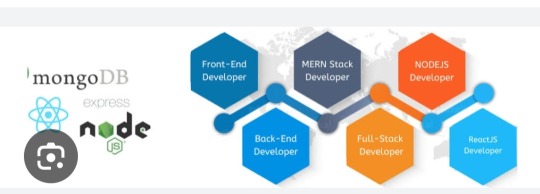
Importance of Mern Stack :
Full-Stack JavaScript – Uses JavaScript for frontend and backend, simplifying development.
High Performance – Node.js ensures fast, scalable applications.
Cost-Effective – Open-source, reducing development costs.
Rapid Development – React’s reusable components speed up UI building.
Flexibility – Suitable for web apps, SPAs, eCommerce, and real-time applications.
Scalability – MongoDB handles large data efficiently.
Strong Community Support – Large developer base ensures continuous updates and support.
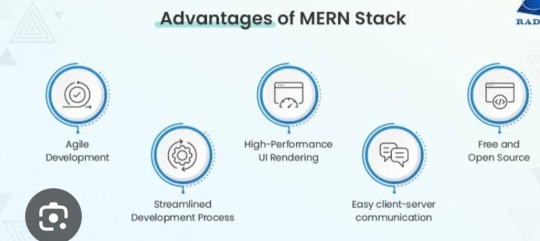
Now i will tell you the best institute for Mern stack course in Chandigarh .

Excellence Technology is a leading EdTech (Educational technology) company dedicated to empowering individuals with cutting -edge IT skills and bridging the gap between education and industry demands. Specializing in IT training ,carrer development, and placement assistance ,the company equipts learners with the technical expertise and practical experience needed to thrive in today's competitive tech landscape. We provide IT courses like python ,Full stack Development, Web Design ,Graphic Design and Digital Marketing.
Contact Us for more details: 93177-88822
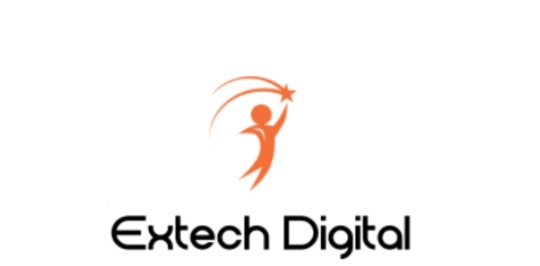
Extech Digital is a leading software development company dedicated to empowering individuals with cutting -edge IT skills and bridging the gap between education and industry demands. Specializing in IT training ,carrer development, and placement assistance ,the company equipt learners with the technical expertise and practical experience needed to thrive in today's competitive tech landscape. e provide IT courses like Python ,Full stack Development, Web Design ,Graphic Design and Digital Marketing.
Contact Us for more details: 93177-88822

Excellence academy is a leading software development company dedicated to empowering individual with cutting edge IT skills and bridging the gap between education and industry demands.specializing in IT training, career development, and placement assistance, the company equits learners with the technical expertise and practical experience needed to thrive in today's landscape. We provide IT courses like python, full stack development,Web design, and Digital marketing.
Contact Us for more details: 93177-88822
About Author
Nikita Thakur
Mern stack AI Developer/ 2+ years of experience
Excellence technology
Professional summary
Nikita thakur is a skilled MERN Stack AI Developer with over 2 years of experience at Excellence Technology. Proficient in MongoDB, Express.js, React.js, and Node.js, she integrates AI solutions to build scalable, high-performance web applications. Nikita excels in developing innovative solutions, enhancing user experiences, and driving business growth through technology.
2 notes
·
View notes
Text
What is SaaS and How to Build a SaaS Platform
What is SaaS? SaaS, or Software as a Service, is a cloud-based software delivery model where applications are hosted online and accessed through the internet. Unlike traditional software that requires installation, SaaS applications run on web browsers, offering convenience and flexibility. The provider manages all technical aspects, including updates, maintenance, and security, while users pay a subscription fee for access.
SaaS is popular for its cost-effectiveness and scalability. Businesses use SaaS for tools like customer relationship management (CRM) systems, project management platforms, and communication solutions. Consumers also rely on SaaS for entertainment and personal productivity.
How to Build a SaaS Platform If you're wondering how to build a SaaS platform, here are the essential steps:
Define Your Purpose: Start by identifying a problem that your SaaS platform will address. Research your audience and focus on a specific niche.
Plan Features: List features that add value, such as easy navigation, integrations, and real-time collaboration. Scalability should also be a priority.
Select the Right Technology: Choose technologies like React for frontend development, Node.js or Python for backend, and cloud hosting platforms like AWS.
Create an MVP: Build a Minimum Viable Product to test your concept, gather feedback, and refine your platform.
Ensure Security: Implement strong encryption, secure authentication, and regular updates to protect user data.
By understanding what SaaS is and following these steps, you can build a successful SaaS platform that meets market needs.
2 notes
·
View notes
Text
$AIGRAM - your AI assistant for Telegram data
Introduction
$AIGRAM is an AI-powered platform designed to help users discover and organize Telegram channels and groups more effectively. By leveraging advanced technologies such as natural language processing, semantic search, and machine learning, AIGRAM enhances the way users explore content on Telegram.
With deep learning algorithms, AIGRAM processes large amounts of data to deliver precise and relevant search results, making it easier to find the right communities. The platform seamlessly integrates with Telegram, supporting better connections and collaboration. Built with scalability in mind, AIGRAM is cloud-based and API-driven, offering a reliable and efficient tool to optimize your Telegram experience.
Tech Stack
AIGRAM uses a combination of advanced AI, scalable infrastructure, and modern tools to deliver its Telegram search and filtering features.
AI & Machine Learning:
NLP: Transformer models like BERT, GPT for understanding queries and content. Machine Learning: Algorithms for user behavior and query optimization. Embeddings: Contextual vectorization (word2vec, FAISS) for semantic search. Recommendation System: AI-driven suggestions for channels and groups.
Backend:
Languages: Python (AI models), Node.js (API). Databases: PostgreSQL, Elasticsearch (search), Redis (caching). API Frameworks: FastAPI, Express.js.
Frontend:
Frameworks: React.js, Material-UI, Redux for state management.
This tech stack powers AIGRAM’s high-performance, secure, and scalable platform.
Mission
AIGRAM’s mission is to simplify the trading experience for memecoin traders on the Solana blockchain. Using advanced AI technologies, AIGRAM helps traders easily discover, filter, and engage with the most relevant Telegram groups and channels.
With the speed of Solana and powerful search features, AIGRAM ensures traders stay ahead in the fast-paced memecoin market. Our platform saves time, provides clarity, and turns complex information into valuable insights.
We aim to be the go-to tool for Solana traders, helping them make better decisions and maximize their success.
Our socials:
Website - https://aigram.software/ Gitbook - https://aigram-1.gitbook.io/ X - https://x.com/aigram_software Dex - https://dexscreener.com/solana/baydg5htursvpw2y2n1pfrivoq9rwzjjptw9w61nm25u
2 notes
·
View notes
Text
The Roadmap to Full Stack Developer Proficiency: A Comprehensive Guide
Embarking on the journey to becoming a full stack developer is an exhilarating endeavor filled with growth and challenges. Whether you're taking your first steps or seeking to elevate your skills, understanding the path ahead is crucial. In this detailed roadmap, we'll outline the stages of mastering full stack development, exploring essential milestones, competencies, and strategies to guide you through this enriching career journey.

Beginning the Journey: Novice Phase (0-6 Months)
As a novice, you're entering the realm of programming with a fresh perspective and eagerness to learn. This initial phase sets the groundwork for your progression as a full stack developer.
Grasping Programming Fundamentals:
Your journey commences with grasping the foundational elements of programming languages like HTML, CSS, and JavaScript. These are the cornerstone of web development and are essential for crafting dynamic and interactive web applications.
Familiarizing with Basic Data Structures and Algorithms:
To develop proficiency in programming, understanding fundamental data structures such as arrays, objects, and linked lists, along with algorithms like sorting and searching, is imperative. These concepts form the backbone of problem-solving in software development.
Exploring Essential Web Development Concepts:
During this phase, you'll delve into crucial web development concepts like client-server architecture, HTTP protocol, and the Document Object Model (DOM). Acquiring insights into the underlying mechanisms of web applications lays a strong foundation for tackling more intricate projects.
Advancing Forward: Intermediate Stage (6 Months - 2 Years)
As you progress beyond the basics, you'll transition into the intermediate stage, where you'll deepen your understanding and skills across various facets of full stack development.

Venturing into Backend Development:
In the intermediate stage, you'll venture into backend development, honing your proficiency in server-side languages like Node.js, Python, or Java. Here, you'll learn to construct robust server-side applications, manage data storage and retrieval, and implement authentication and authorization mechanisms.
Mastering Database Management:
A pivotal aspect of backend development is comprehending databases. You'll delve into relational databases like MySQL and PostgreSQL, as well as NoSQL databases like MongoDB. Proficiency in database management systems and design principles enables the creation of scalable and efficient applications.
Exploring Frontend Frameworks and Libraries:
In addition to backend development, you'll deepen your expertise in frontend technologies. You'll explore prominent frameworks and libraries such as React, Angular, or Vue.js, streamlining the creation of interactive and responsive user interfaces.
Learning Version Control with Git:
Version control is indispensable for collaborative software development. During this phase, you'll familiarize yourself with Git, a distributed version control system, to manage your codebase, track changes, and collaborate effectively with fellow developers.
Achieving Mastery: Advanced Phase (2+ Years)
As you ascend in your journey, you'll enter the advanced phase of full stack development, where you'll refine your skills, tackle intricate challenges, and delve into specialized domains of interest.
Designing Scalable Systems:
In the advanced stage, focus shifts to designing scalable systems capable of managing substantial volumes of traffic and data. You'll explore design patterns, scalability methodologies, and cloud computing platforms like AWS, Azure, or Google Cloud.
Embracing DevOps Practices:
DevOps practices play a pivotal role in contemporary software development. You'll delve into continuous integration and continuous deployment (CI/CD) pipelines, infrastructure as code (IaC), and containerization technologies such as Docker and Kubernetes.
Specializing in Niche Areas:
With experience, you may opt to specialize in specific domains of full stack development, whether it's frontend or backend development, mobile app development, or DevOps. Specialization enables you to deepen your expertise and pursue career avenues aligned with your passions and strengths.
Conclusion:
Becoming a proficient full stack developer is a transformative journey that demands dedication, resilience, and perpetual learning. By following the roadmap outlined in this guide and maintaining a curious and adaptable mindset, you'll navigate the complexities and opportunities inherent in the realm of full stack development. Remember, mastery isn't merely about acquiring technical skills but also about fostering collaboration, embracing innovation, and contributing meaningfully to the ever-evolving landscape of technology.
#full stack developer#education#information#full stack web development#front end development#frameworks#web development#backend#full stack developer course#technology
9 notes
·
View notes
Text
The Role of a Frontend Developer: Crafting Engaging User Experiences
In the digital age, the frontend developer plays a pivotal role in creating the online experiences we interact with every day. From websites to mobile apps, these professionals are responsible for shaping how users interact with digital products, ensuring that every click, scroll, and swipe is smooth and intuitive. But what exactly does a frontend developer do, and why is their role so critical in today's tech-driven world?
What Is a Frontend Developer?
A frontend developer is responsible for the visual and interactive elements of a website or application that users interact with directly. They bridge the gap between design and technology, translating a designer’s vision into functional, responsive, and user-friendly interfaces. Unlike backend developers, who focus on the server-side aspects, frontend developers specialize in client-side development, working with tools and technologies that directly impact the user experience.
Key Responsibilities of a Frontend Developer
The main job of a frontend developer is to ensure that users can easily navigate, interact with, and enjoy the digital product. Here’s a breakdown of their core responsibilities:
Turning Design into Code: Frontend developers take the visual designs created by UI/UX designers and bring them to life using code. They ensure that what users see on their screen aligns with the intended look and feel, while also making sure it’s functional across different devices and screen sizes.
Responsive Design: With users accessing websites from various devices, such as smartphones, tablets, and desktops, frontend developers focus on responsive design. This means building websites that automatically adjust to fit different screen sizes and orientations, offering an optimal experience regardless of the device.
Optimizing Performance: A key part of a frontend developer’s job is making sure that websites load quickly and perform smoothly. They optimize images, manage scripts, and streamline code to ensure fast loading times, as slow websites can lead to user frustration and high bounce rates.
Implementing Interactivity: Frontend developers add interactive elements like animations, hover effects, and dropdown menus that enhance the user experience. By using JavaScript and frameworks like React or Vue.js, they make websites dynamic and engaging, going beyond static designs.
Cross-Browser Compatibility: Websites need to work consistently across different browsers (Chrome, Firefox, Safari, etc.), and frontend developers are responsible for ensuring this compatibility. They test websites in multiple environments to fix any bugs or inconsistencies in the design or functionality.
Core Skills of a Frontend Developer
To excel as a frontend developer, there are several technical skills and tools that are essential:
HTML/CSS: These are the building blocks of web development. HTML structures the content, while CSS styles it, ensuring that it looks polished and visually appealing.
JavaScript: This programming language allows developers to add interactive elements, like form validation, dynamic content updates, and animations, making websites more engaging.
Frameworks and Libraries: Frameworks like React, Angular, or Vue.js help developers build complex web applications efficiently by providing pre-built structures and components.
Version Control (Git): Collaboration is key in web development, and version control tools like Git allow frontend developers to track changes, collaborate with other developers, and manage different versions of the project code.
Responsive Design & CSS Frameworks: Developers often use frameworks like Bootstrap or Tailwind CSS to ensure that their websites are responsive and adaptable to all devices.
The Evolving Role of Frontend Developers
As technology continues to evolve, the role of a frontend developer is expanding. Today, the line between frontend and backend development is becoming increasingly blurred, with many frontend developers expected to have some knowledge of backend technologies (a role often referred to as "full-stack development").
Additionally, the rise of progressive web apps (PWAs) and headless CMS architectures has introduced new ways of thinking about frontend development. Frontend developers are now focusing on creating experiences that go beyond the browser, delivering high-performance, native-like experiences on the web.
Another area of growing importance for frontend developers is accessibility. Ensuring that websites are usable by people with disabilities is not just a legal requirement but a responsibility for developers who want to create inclusive digital experiences. This involves using semantic HTML, providing keyboard navigability, and designing with screen readers in mind.
Why Frontend Developers Are Crucial for Business Success
Frontend developers play a critical role in shaping the user experience, which directly impacts the success of a digital product. A well-designed, fast, and user-friendly website or application can increase engagement, boost conversion rates, and enhance brand perception.
For businesses, the user interface is often the first point of contact with potential customers. If a website is slow, difficult to navigate, or visually unappealing, users are likely to leave, costing the business potential sales or leads. Frontend developers ensure that the website or app not only looks great but also performs optimally, keeping users engaged and satisfied.
Conclusion
In the modern digital landscape, frontend developers are essential to creating seamless, engaging, and high-performance online experiences. Their unique combination of technical skills and creative problem-solving allows them to transform designs into functional, responsive, and dynamic websites. As the demand for intuitive digital products continues to grow, the role of the frontend developer will only become more integral to business success and the evolution of web technologies.
4o
You said:
is ko english ma kr do "A o A Sir aj 3 outreach sy bat hoi or YTC k Backlinks Create KIa "
ChatGPT said:
ChatGPT
"Hello Sir, today I had discussions with 3 outreach contacts and created backlinks for YTC."
4o
You said:
ma gmail pr richout kr raha ho mujy ya masg aya ha is ka mujy koi replly kro "Thanks for reaching out. We charge $59 for submission. Let me know what you think."
ChatGPT said:
ChatGPT
You can reply with a polite and professional message like this:
Subject: Re: Submission Inquiry
Hi [Recipient's Name],
Thank you for your response and for providing the pricing details. I appreciate the information. I'll take this into consideration and get back to you shortly with my decision.
Best regards, [Your Name] [Your Position] [Your Company]
This keeps the conversation open while allowing you time to decide.
4o
You said:
Write A Article on "Front End Developer"
ChatGPT said:
ChatGPT
Title: The Role of a Front-End Developer: Crafting the Digital Experience
In today’s fast-paced digital world, websites and applications are the primary touchpoints for businesses and users. The seamless experiences we enjoy on websites—from smooth navigation to responsive design—are largely due to the efforts of front-end developers. But what exactly does a front-end developer do, and why is their role crucial in building user-friendly, efficient digital products?
What is a Front-End Developer?
A front-end developer is a professional who focuses on the client-side development of a website or application. This means they work on the part of the website that users directly interact with. While the back-end (server-side) handles the logic and data storage, the front-end is responsible for what users see and how they interact with a site.
In essence, front-end developers translate design mockups into functional websites or applications using code. They combine the worlds of design, user experience (UX), and coding to ensure a smooth, responsive, and visually appealing user interface (UI).
Key Responsibilities of a Front-End Developer
The role of a front-end developer goes beyond just coding a website. It involves understanding user needs, optimizing for performance, and ensuring the digital product works flawlessly across various devices and browsers. Here are the key responsibilities of a front-end developer:
Translating Designs into Code: Front-end developers take designs created by web designers and bring them to life using programming languages like HTML, CSS, and JavaScript. They ensure the design translates accurately into a functioning webpage or application, maintaining the visual fidelity of the design while ensuring usability.
Ensuring Responsiveness: In today’s multi-device world, websites need to work across desktops, tablets, and smartphones. Front-end developers make sure websites are responsive, meaning they adapt seamlessly to various screen sizes and orientations.
Implementing Interactivity: Interactivity is key to user engagement. Front-end developers use JavaScript and related frameworks to add interactive elements like animations, sliders, form validations, and dynamic content updates, making the user experience more engaging.
Optimizing Performance: Fast loading times are critical for user satisfaction and SEO. Front-end developers optimize images, minimize code, and ensure efficient loading of assets to create websites that load quickly and perform smoothly.
Cross-Browser Compatibility: Websites need to work consistently across different browsers such as Chrome, Firefox, Safari, and Edge. Front-end developers ensure that websites function correctly and look the same on all browsers, addressing any quirks or inconsistencies.
Maintaining Website Accessibility: Front-end developers also focus on making websites accessible to all users, including those with disabilities. They implement practices like semantic HTML, ARIA (Accessible Rich Internet Applications) attributes, and keyboard navigation to create an inclusive user experience.
Essential Skills for a Front-End Developer
To excel as a front-end developer, professionals need a combination of technical skills, creativity, and attention to detail. Below are some of the key skills required:
HTML/CSS: These are the foundational languages of front-end development. HTML (Hypertext Markup Language) structures content on the web, while CSS (Cascading Style Sheets) defines how that content looks in terms of layout, color, fonts, and design.
JavaScript: JavaScript is a powerful scripting language used to add interactivity to a website. With JavaScript, developers can create dynamic content, handle user events, and interact with back-end data in real-time.
Responsive Design: Knowledge of responsive design is crucial to ensure that websites and apps work seamlessly across all devices. Tools like Bootstrap or media queries in CSS help developers create adaptive layouts that fit all screen sizes.
Frameworks and Libraries: Modern front-end developers often use libraries and frameworks like React, Angular, or Vue.js to build more complex web applications efficiently. These tools provide pre-built components and structures to speed up development.
Version Control (Git): Front-end developers often work in teams, and version control tools like Git allow them to track changes in code, collaborate with others, and ensure the codebase remains organized.
Cross-Browser Development: Each browser interprets code slightly differently, so front-end developers must test their websites across various browsers and devices to ensure compatibility.
The Importance of Front-End Developers in Business
In today’s digital economy, a company’s website or mobile app is often the first point of contact with customers. Whether it’s an e-commerce platform, a SaaS application, or a simple company webpage, the user experience can significantly impact brand perception and business outcomes.
Front-end developers ensure that these digital touchpoints are engaging, easy to navigate, and visually appealing, which can directly influence user engagement and conversion rates. A well-designed website that loads quickly, functions smoothly, and offers a seamless user experience can set a business apart from its competitors.
Moreover, front-end developers are key players in building websites optimized for SEO (Search Engine Optimization). Fast-loading, mobile-friendly, and well-structured websites tend to rank higher on search engines, driving more organic traffic to the site.
Front-End Development and Emerging Technologies
As technology evolves, so does the role of the front-end developer. The rise of progressive web apps (PWAs), single-page applications (SPAs), and headless CMS (Content Management Systems) has created new challenges and opportunities for front-end developers.
PWAs allow websites to function like native apps, offering offline capabilities and faster load times. Front-end developers need to integrate these features while maintaining the flexibility of a website.
SPAs load a single HTML page and dynamically update content as the user interacts with the app, creating a more fluid experience. This requires front-end developers to have expertise in frameworks like React and Angular.
Headless CMS decouples the front-end from the back-end, giving front-end developers more control over how content is presented. This allows for greater flexibility in design and user interaction.
Conclusion
The role of a front-end developer is crucial in shaping the digital experience. By combining technical expertise with creativity, front-end developers bring designs to life, ensuring that websites are not only visually appealing but also functional, responsive, and user-friendly. In a world where the digital experience can make or break a business, front-end developers are key players in driving online success.
2 notes
·
View notes
Text
Best 10 Business Strategies for year 2024
In 2024 and beyond, businesses will have to change with the times and adjust their approach based on new and existing market realities. The following are the best 10 business approach that will help companies to prosper in coming year
1. Embrace Sustainability
The days when sustainability was discretionary are long gone. Businesses need to incorporate environmental, social and governance (ESG) values into their business practices. In the same vein, brands can improve brand identity and appeal to environmental advocates by using renewable forms of energy or minimizing their carbon footprints.
Example: a fashion brand can rethink the materials to use organic cotton and recycled for their clothing lines. They can also run a take-back scheme, allowing customers to return old clothes for recycling (not only reducing waste but creating and supporting the circular economy).
2. Leverage AI

AI is revolutionizing business operations. Using AI-fuelled solutions means that you can automate processes, bring in positive customer experiences, and get insights. AI chatbots: AI can be utilized in the form of a conversational entity to support and perform backend operations, as well.
With a bit more specificity, say for example that an AI-powered recommendation engine recommends products to customers based on their browsing history and purchase patterns (as the use case of retail). This helps to increase the sales and improve the shopping experience.
3. Prioritize Cybersecurity
Cybersecurity is of utmost important as more and more business transitions towards digital platforms. Businesses need to part with a more substantial amount of money on advanced protective measures so that they can keep sensitive data private and continue earning consumer trust. Regular security audits and training of employees can reduce these risks.
Example: A financial services firm may implement multi-factor authentication (MFA) for all online transactions, regularly control access to Internet-facing administrative interfaces and service ports as well as the encryption protocols to secure client data from cyberattacks.
4. Optimizing Remote and Hybrid Working Models
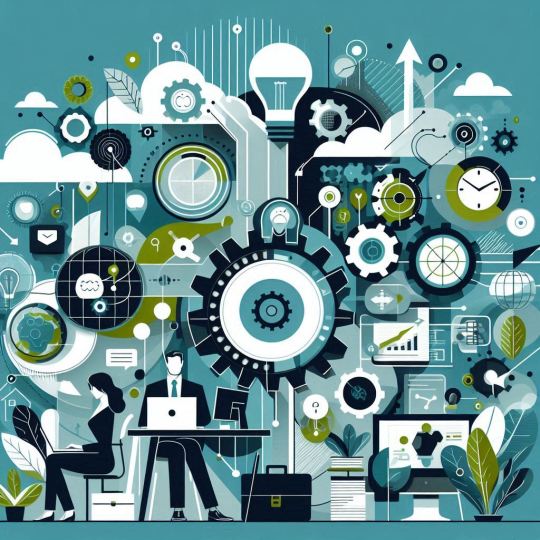
Remote / hybrid is the new normal Remote teams force companies to implement effective motivation and management strategies. Collaboration tools and a balanced virtual culture can improve productivity and employee satisfaction.
- Illustration: a Tech company using Asana / Trello etc. for pm to keep remote teams from falling out of balance. They can also organise weekly team-building activities to keep a strong team spirit.
5. Focus on Customer Experience
Retention and growth of the sales follow-through can be tied to high quality customer experiences. Harness data analytics to deepen customer insights and personalize product offers making your marketing campaigns personal: a customer support that is responsive enough can drive a great level of returning customers.
Example – For any e-commerce business, you can take user experience feedback tools to know about how your customers are getting along and make necessary changes. Custom email campaigns and loyalty programs can also be positively associated with customer satisfaction and retention.
6. Digitalization Investment

It is only the beginning of digital transformation which we all know, is key to global competitiveness. For streamlining, companies have to adopt the use advanced technologies such as Blockchain Technology and Internet of Things (IoT) in conjunction with cloud computing.
IoT example : real-time tracking and analytics to optimize supply chain management
7. Enhance Employee Skills
Develop Your Employees: Investing in employee development is key to succeeding as a business. The training is provided for the folks of various industries and so employees can increase their skills that are needed to work in a certain company. Employee performance can be enhanced by providing training programs in future technology skills and soft skills and job satisfaction.
Example: A marketing agency can host webinars or create courses to teach people the latest digital marketing trends and tools This can help to keep employees in the know which results in boosting their skills, making your campaigns successful.
8. Diversify Supply Chains

The ongoing pandemic has exposed the weaknesses of global supply chains. …diversify its supply base and promote the manufacturing of drugs in Nigeria to eliminate total dependence on a single source. In return, this approach increases resilience and reduces exposure to the risks of supply chain interruption.
- E.g., a consumer electronics company can source components from many suppliers in various regions. In so doing, this alleviates avoidable supply chain interruptions during times of political tensions or when disasters hit.
9. Make Decisions Based on Data
A business database is an asset for businesses. By implementing data, they allow you to make decisions based on the data that your analytics tools are providing. For example, sales analysis lets you track trends and better tailor your goods to the market.
Example: A retail chain can use data analytics to find out when a customer buys, and it change their purchasing policies. This can also reduce overstock and stockouts while overall, increasing efficiency.
10. Foster Innovation
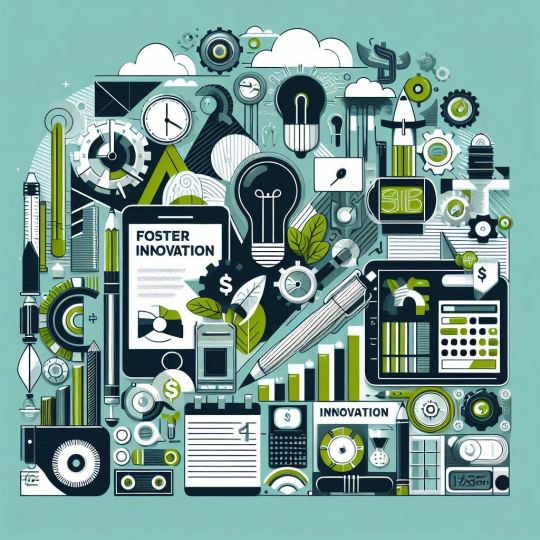
Business Growth Innovation is Key A culture of creativity and experimentation should be established in companies. Funding R&D and teaming with startups can open many doors to both solve problems creatively but also tap into new markets.
Example: A software development firm could create an innovation lab where team members are freed to work on speculative projects. Moreover, work with start-ups on new technologies and solutions.
By adopting these strategies, businesses can navigate the turbulence for 2024 and roll up market — progressive.AI with an evolving dynamic market, being ahead of trends and updated is most likely will help you thrive in the business landscape.
#ai#business#business strategy#business growth#startup#fintech#technology#tech#innovation#ai in business
2 notes
·
View notes
Text
Top 20 Backend Development Tools In 2023
Backend development plays a crucial role in the operation and performance optimisation of web and mobile applications, serving as their foundational framework. In the context of the dynamic technological environment, it is imperative for developers to remain abreast of the most recent and effective backend development technologies. In the year 2023, a plethora of advanced tools have surfaced, leading to a significant transformation in the approach to backend development. Reach out to Nivida Web Solutions - a noted Web development company in Vadodara and let's craft a website that sets you apart.
This analysis aims to examine the leading 20 backend development tools projected for the year 2023, which possess the potential to optimise operational effectiveness, raise work output, and achieve exceptional outcomes.
1. Node.js:
Node.js continues to be a prominent contender in the realm of backend development, offering a resilient framework for constructing scalable, server-side applications through the utilisation of JavaScript. The asynchronous and event-driven nature of the system renders it highly suitable for real-time applications and microservices.
2. Express.js:
Express.js is a Node.js framework that offers a basic and flexible approach to backend development. It achieves this by providing streamlined routing, efficient handling of HTTP requests, and effective management of middleware. The software possesses a high degree of extensibility, allowing developers to create tailored solutions.
3. Django:
Django, a renowned Python framework, is widely recognised for its exceptional performance, robust security measures, and remarkable scalability. The framework adheres to the "batteries-included" principle, providing a wide range of pre-installed functionalities and libraries that enhance the speed and efficiency of the development process.
4. Flask:
Flask, an additional Python framework, is characterised by its lightweight nature and user-friendly interface. The framework offers fundamental capabilities for backend development and enables developers to incorporate additional functionalities as required, thus rendering it very adaptable.
5. Spring Boot:
Spring Boot, which is built on the Java programming language, streamlines the process of creating applications that are ready for deployment by employing a convention-over-configuration methodology. The platform provides a variety of functionalities to construct resilient and scalable backend systems. Embark on a digital journey with Nivida Web Solutions - the most distinguished Web development company in Gujarat. Let's create a stunning, functional website tailored to your business!
6. Ruby on Rails:
Ruby on Rails, also referred to as Rails, is renowned for its high level of efficiency and user-friendly nature. The framework employs the Ruby programming language and places a strong emphasis on convention over configuration, facilitating expedited development processes.
7. ASP.NET Core:
ASP.NET Core is a highly adaptable and efficient cross-platform framework that facilitates the development of backend solutions through the utilisation of the C# programming language. The product provides exceptional performance, robust security measures, and effortless compatibility with many systems.
8. Laravel:
Laravel, a framework developed using the PHP programming language, is well-acknowledged for its sophisticated syntax and user-centric functionalities. The utilisation of this technology streamlines intricate operations such as authentication, caching, and routing, hence facilitating an expedited development procedure.
9. NestJS:
NestJS is a Node.js framework that adheres to the architectural patterns established by Angular, hence exhibiting a progressive nature. The software possesses a high degree of modularity, hence facilitating the scalability and maintenance of applications. NestJS places a strong emphasis on the principles of maintainability and testability.
10. RubyMine:
RubyMine is an influential integrated development environment (IDE) designed specifically for the purpose of facilitating Ruby on Rails development. The software provides advanced code assistance, navigation, and debugging functionalities, hence augmenting the efficiency of Ruby developers. Looking for a standout web presence? Let Nivida Web Solutions - the most popular Web development company in India craft a website that impresses. Reach out now and let's get started!
11. PyCharm:
PyCharm, an integrated development environment (IDE) designed specifically for the Python programming language, is extensively utilised in the realm of backend development. The software offers intelligent code completion, comprehensive code analysis, and integrated tools to facilitate fast development and debugging processes.
12. IntelliJ IDEA:
IntelliJ IDEA, a widely utilised integrated development environment (IDE), provides comprehensive support for multiple programming languages, encompassing Java, Kotlin, and many more. The software is renowned for its advanced coding assistance and efficient capabilities, which greatly assist backend developers in producing code of superior quality.
13. Visual Studio Code (VSCode):
VSCode is a code editor that is known for its lightweight nature and open-source nature. Due to its extensive extension library and high level of customizability, this platform is widely favoured by backend developers due to its versatile nature.
14. Postman
Postman is an efficient and powerful application programming interface (API) testing tool that streamlines the process of doing backend testing and facilitating communication among developers. This tool facilitates the efficient design, testing, and documentation of APIs, hence assuring a smooth integration process. Every click counts in the digital world. Partner with Nivida Web Solutions - one of the top Web development companies in Vadodara to create a user-friendly, engaging website. Choose Nivida Web Solutions to boost your online impact!
15. Swagger:
Swagger, currently recognised as the OpenAPI Specification, serves to enable the process of designing, documenting, and evaluating APIs. The standardised structure of API description facilitates the seamless and uncomplicated integration process.
16. MongoDB:
MongoDB, a widely adopted NoSQL database, has notable advantages in terms of scalability, flexibility, and superior performance. Due to its capacity to effectively manage substantial quantities of data and accommodate various data models, it is extensively employed in the realm of backend development.
17. PostgreSQL:
PostgreSQL, an open-source relational database management system, is widely recognised for its robustness, adaptability, and comprehensive SQL capabilities. This option is highly recommended for projects that necessitate a resilient backend data repository.
18. Redis:
Redis is an essential component for caching and real-time analytics due to its ability to store data structures in memory. The indispensability of this technology lies in its high performance and its capability to effectively manage data structures, hence facilitating the optimisation of backend processes.
19. Kafka:
Apache Kafka is a distributed streaming platform that handles real-time data processing. It's commonly used for building scalable, fault-tolerant backend systems that require high-throughput data ingestion and processing. Dive into the digital era with a website that wows! Collaborate with Nivida Web Solutions - one of the leading Web development companies in Gujarat and boost your online presence.
20. Docker:
Docker is a containerization technology that facilitates the streamlined deployment and scalability of programs. The utilisation of containers enables backend developers to encapsulate their programmes and associated dependencies, hence ensuring uniformity and adaptability across diverse contexts.
Final Thoughts:
It is of utmost importance for developers to be updated on the most recent backend development technologies in order to effectively offer applications that are efficient, scalable, and safe. The compendium of the foremost 20 backend development tools projected for the year 2023 encompasses an extensive array of functions, adeptly accommodating the multifarious requirements of backend development endeavours. These technologies provide developers with the ability to enhance their backend development endeavours and provide users with outstanding experiences, whether through the creation of real-time applications, database management, or performance optimisation. Your website is your digital storefront. Make it appealing! Contact Nivida Web Solutions - one of the most renowned Web development companies in India and design a website that captivates your audience. Get started now!
7 notes
·
View notes
Text
There's this boy
I was poking around an old (non-tumblr) blog of mine, long abandonded, login forgotten. I guess my computer remembered the login for me because in my haphazard clicking I ended up falling into the backend, a list of posts before me. Including drafts. Posts never posted, that I barely if at all remember writing. Snapshots of a younger me, seperated from now by just over a decade. So focused, so idealistic.
I thought I'd finally let some of those words see the light of day. I've changed somewhat, I've definitely lost the surety of gender, but I like to believe that I have retained some of that idealism, and that the sentiment of last sentence remains true.
"There's this boy" 24th Feb 2013
Labels: Futurism, Sleep deprivation
There's this boy, and all he wants in life is to live in the future. Not so much to get older quicker, more to experience the far future. So he devours sci-fi and spec-fic media. Books like Neuromancer, and The Diamond Age, where humans blend seamlessly with the technology around them. Games like Mass Effect that demonstrate a relatively newly space-faring humanity, veritable virgins in the galactic landscape. Settings like Revelation Space, where humanity, wiser but still possessing it's myriad flaws, is verging on transhumanism, moving beyond regular evolution, to Eclipse Phase, where transhumanity is all there is. Consciousness can be uploaded and downloaded, tinkered with and altered as easily as one might get a tattoo.
Science is another passion. Physics in particular. He doesn't remember which came first, his love for the future, or his love for science, but it doesn't seem to matter. Each lead directly to the other, and he studies hard, or at least as hard as a boy will when surrounded by his beloved tech, so he can be part of as much of the future as his human life will allow. And he hopes beyond hope, that that limit keeps moving further and further away as science and technology continue to make breakthroughs in longevity.
I think about this boy and I think, all he really wants is what any, or at least many of us want deep down. He is working under the same mental drive that forces people to believe in a supernatural afterlife, or reincarnation. He wants immortality. He fears death, yes, though he will not readily admit it to himself, but it is not this that drives him. You see he loves science and he loves the future because he loves humanity, as one loves and worries about a dear friend. He wants to see humanity's potential realised, to witness them reach out into space and explore and learn. To beat disease, and eventually death. To inevitably become greater than humanity itself, and be born into something wholly new.
He fears death, but more often he fears that this will remain in the realm of sci fi and spec fic. He wants to live long and learn, and for humanity to learn with him, for he knows that we live in a finite universe, and learning is all there is. There is no greater goal, no greater reason to live than to learn and experience and love, and there is so much of it to do, so much that his heart screams out in joy and terror at the shear magnitude of it all, and he cannot do it alone. So he studies his physics and follows his technology, and he hopes. He loves humanity and he hopes.
3 notes
·
View notes
Text
Java Learning Roadmap: From Basics to Mastery
Embarking on a Java learning journey from the comfort of your home offers unparalleled flexibility and convenience. Whether your aspirations lie in web development, Android app creation, or backend coding, Java serves as a robust foundation.

This comprehensive guide outlines a step-by-step approach to help beginners effectively grasp Java concepts and skills from the comfort of their own space.
1. Establish Clear Learning Objectives: Prior to diving into Java learning, take a moment to define your goals. Determine what you aim to achieve with your Java proficiency, whether it's gaining foundational knowledge, tackling projects, or pursuing a career in software development.
2. Select High-Quality Learning Resources: Choose your learning materials wisely. Opt for reputable online platforms such as Udemy, Coursera, or Codecademy that offer well-structured Java courses tailored to beginners. Supplement your learning with books, video tutorials, and interactive exercises to enhance comprehension.
3. Start with Fundamental Concepts: Begin your Java journey by focusing on fundamental principles. Familiarize yourself with core concepts like variables, data types, loops, conditionals, and object-oriented programming basics. Online tutorials and interactive exercises serve as invaluable resources for grasping these foundational elements.
4. Cultivate Regular Practice Habits: Consistent practice is key to mastering Java. Allocate dedicated time each day to code, solve programming challenges, and engage in project work. Platforms like LeetCode, HackerRank, and CodeSignal provide a plethora of coding challenges to hone your skills and build confidence.
5. Engage in Project Development: Apply your newfound knowledge by embarking on real-world projects. Start with simple tasks, such as creating a calculator, a to-do list app, or a basic game. As you grow more confident, tackle more complex projects that align with your learning objectives and interests.

6. Connect with the Java Community: Join online forums, discussion groups, and social media communities to interact with fellow Java enthusiasts and experts. Platforms like Stack Overflow, Reddit, and GitHub offer invaluable opportunities to seek advice, share knowledge, and gain insights from experienced developers.
7. Embrace Constructive Feedback: Don't shy away from seeking feedback on your code and projects. Embrace constructive criticism as a catalyst for growth and improvement. Participate in code reviews, collaborate with peers, and leverage online resources to continuously refine your Java skills.
8. Stay Abreast of Developments: Java is a dynamic language with frequent updates and advancements. Stay informed about the latest trends, tools, and technologies in the Java ecosystem by following industry blogs, attending webinars, and exploring new frameworks and libraries.
9. Explore Advanced Topics: Once you've mastered the basics, delve into more advanced Java topics such as multithreading, networking, and database connectivity. Advanced Java courses, tutorials, and books offer deeper insights into these complex concepts, enabling you to expand your skill set further.
10. Build a Stellar Portfolio: As your Java proficiency grows, assemble a portfolio to showcase your projects and achievements. A well-curated portfolio serves as a compelling demonstration of your skills and capabilities to potential employers or clients. Highlight your standout projects, provide detailed descriptions, and showcase your problem-solving prowess to make a lasting impression.
Conclusion: Learning Java from home is an enriching journey that empowers individuals to unlock countless opportunities in software development. By setting clear goals, leveraging quality resources, practicing consistently, and engaging with the Java community, you can confidently master this versatile programming language and chart a successful career path in technology. Remember, dedication, perseverance, and a genuine passion for learning are the driving forces behind your Java learning journey's success.
#technology#java#javaprogramming#javascript#computerscience#programming#developer#java course#java training#java training course
2 notes
·
View notes
Text

Backend Development Services and Solutions in Bangalore
About us- Rasonix is the best Website Designing & Software Development Company in India specializing in creating innovative and tailored solutions for businesses. Empower your business with efficient System Administration services. Our dedicated team ensures the seamless management of your IT infrastructure, networks, and servers, enabling optimal performance, security, and reliability. Transform Your Vision into Reality - Get Your Custom App or Website Today!
At Rasonix, we are driven by a passion for delivering exceptional solutions and turning our clients' visions into reality. Rasonix is a team of passionate and experienced developers, designers, and strategists who share a common goal: to create exceptional digital solutions that drive results for our clients. With years of industry experience, we have honed our skills and developed a deep understanding of the evolving web landscape. We stay up-to-date with the latest technologies, trends, and best practices to ensure that we deliver the most effective solutions for your business. Transform your business with expert development services.
#web design#responsive web design#software development firm#rasonix#web development company#enterprise application development#software development company#website designer near me
2 notes
·
View notes
Text
Mastering Fullstack Development: Unifying Frontend and Backend Proficiency
Navigating the dynamic realm of web development necessitates a multifaceted skill set. Enter the realm of fullstack development – a domain where expertise in both frontend and backend intricacies converge seamlessly. In this comprehensive exploration, we'll unravel the intricacies of mastering fullstack development, uncovering the diverse responsibilities, essential skills, and integration strategies that define this pivotal role.

Exploring the Essence of Fullstack Development:
Defining the Role:
Fullstack development epitomizes the fusion of frontend and backend competencies. Fullstack developers are adept at navigating the entire spectrum of web application development, from crafting immersive user interfaces to architecting robust server-side logic and databases.
Unraveling Responsibilities:
Fullstack developers shoulder a dual mandate:
Frontend Proficiency: They meticulously craft captivating user experiences through adept utilization of HTML, CSS, and JavaScript. Leveraging frameworks like React.js, Angular.js, or Vue.js, they breathe life into static interfaces, fostering interactivity and engagement.
Backend Mastery: In the backend realm, fullstack developers orchestrate server-side operations using a diverse array of languages such as JavaScript (Node.js), Python (Django, Flask), Ruby (Ruby on Rails), or Java (Spring Boot). They adeptly handle data management, authentication mechanisms, and business logic, ensuring the seamless functioning of web applications.
Essential Competencies for Fullstack Excellence:
Frontend Prowess:
Frontend proficiency demands a nuanced skill set:
Fundamental Languages: Mastery in HTML, CSS, and JavaScript forms the cornerstone of frontend prowess, enabling the creation of visually appealing interfaces.
Framework Fluency: Familiarity with frontend frameworks like React.js, Angular.js, or Vue.js empowers developers to architect scalable and responsive web solutions.
Design Sensibilities: An understanding of UI/UX principles ensures the delivery of intuitive and aesthetically pleasing user experiences.
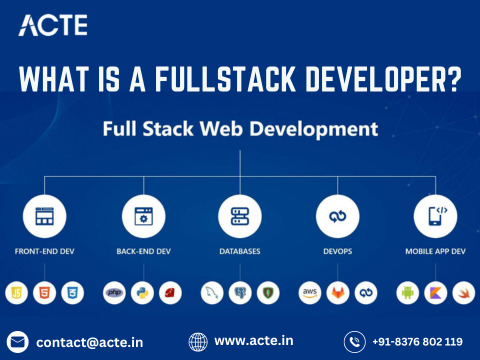
Backend Acumen:
Backend proficiency necessitates a robust skill set:
Language Mastery: Proficiency in backend languages such as JavaScript (Node.js), Python (Django, Flask), Ruby (Ruby on Rails), or Java (Spring Boot) is paramount for implementing server-side logic.
Database Dexterity: Fullstack developers wield expertise in database management systems like MySQL, MongoDB, or PostgreSQL, facilitating seamless data storage and retrieval.
Architectural Insight: A comprehension of server architecture and scalability principles underpins the development of robust backend solutions, ensuring optimal performance under varying workloads.
Integration Strategies for Seamless Development:
Harmonizing Databases:
Integrating databases necessitates a strategic approach:
ORM Adoption: Object-Relational Mappers (ORMs) such as Sequelize for Node.js or SQLAlchemy for Python streamline database interactions, abstracting away low-level complexities.
Data Modeling Expertise: Fullstack developers meticulously design database schemas, mirroring the application's data structure and relationships to optimize performance and scalability.
Project Management Paradigms:
End-to-End Execution:
Fullstack developers are adept at steering projects from inception to fruition:
Task Prioritization: They adeptly prioritize tasks based on project requirements and timelines, ensuring the timely delivery of high-quality solutions.
Collaborative Dynamics: Effective communication and collaboration with frontend and backend teams foster synergy and innovation, driving project success.
In essence, mastering fullstack development epitomizes a harmonious blend of frontend finesse and backend mastery, encapsulating the versatility and adaptability essential for thriving in the ever-evolving landscape of web development. As technology continues to evolve, the significance of fullstack developers will remain unparalleled, driving innovation and shaping the digital frontier. Whether embarking on a fullstack journey or harnessing the expertise of fullstack professionals, embracing the ethos of unification and proficiency is paramount for unlocking the full potential of web development endeavors.
#full stack developer#full stack course#full stack training#full stack web development#full stack software developer
2 notes
·
View notes